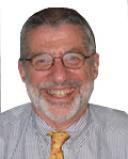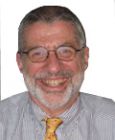Deception
Three Identical Strangers
Precluding a real conversation about the ubiquity of self-deception.
Posted August 20, 2018 Reviewed by Ekua Hagan
In the early 1980s, there was a media frenzy when three identical brothers, who, unknowingly, had been adopted by separate families at birth, accidentally found each other. They appeared together demonstrating their uncanny physical likeness. Three Identical Strangers, winner of a Sundance award, directed by Tim Wardle, tells their story.
Unfortunately, one of the brothers committed suicide as an adult, the details of which are unclear. In addition to clips from the 1980s, family photos and movies, footage that appears to be a recreation of the early meetings, and interviews with the two surviving brothers are a central part of the documentary. It involves extensive interviews with two professionals about the triplets’ and their adoptive parents’ participation in a twin project which began in the 1950s at the Child Development Center (CDC) in New York City under the leadership of Peter Neubauer.
The two professionals who discuss the CDC project in the documentary are Lawrence Wright and Lawrence Perlman. Wright is an award-winning journalist, wrote a 1995 New Yorker article, "Double Mystery," and a book in 1997, Twins: and What They Tell Us About Who We Are. Perlman, a clinical psychologist, was a young research assistant at the CDC project. Wright came across the existence of the CDC project while working on his publications about twins.
The documentary is billed as an exposé of unethical behavior on the part of the agency and researchers, including the assertion by many, that the cohort of twins (and this one set of triplets) was separated in order for them and their adoptive families to be experimented on. These assertions persist even though a prominent twin researcher, Nancy Segal, as well as Lawrence Perlman, the young researcher for the CDC project, noted in 2005 that it was clear that the Louise Wise agency, under the tutelage of the noted child psychiatrist Viola Bernard, felt it was better for the twins to be separated. Neubauer and his colleagues learned about this process and thought it provided a unique opportunity to study the development of these identical twins separated at birth.
Samuel Abrams, a colleague and frequent co-author with Neubauer, described the origin and rationale of the project in a 1986 paper in The Psychoanalytic Study of the Child:
"In the 1960s, an adoption agency found itself involved with the placement of several sets of identical twins and, guided by a variety of influences, chose to separate the members of each set. Of the guiding influences, clinical considerations were central. The prevailing scientific literature of the time [promoted by Bernard] had been discovering features about twins that were bound to attract the attention of any serious practitioner in the mental health field. Those features included the following: 1) the parenting of twins was burdensome so that caregiving was often compromised; 2) the children invariably faced specific developmental hazards that appeared directly attributable to the twinship; and 3) they also appeared more vulnerable to a wide variety of pathological disturbances. [Abrams cites a variety of references to substantiate these assertions.] Once the placements were made, for ethical reasons, the agency could tell neither the adoptive parents nor the children of the existence of a twin, lest that knowledge impair the family-child bonding that was expected to evolve and is recognized as so necessary for growth and development.
"It soon became clear that an extraordinary research opportunity had presented itself, the study of identical twins reared apart in prospect. For the first time—and as far as anyone knew this really was the first time—it would be possible to follow systematically children with shared biological heritages as they grew up in different households. Among other things, the study promised to cast a brighter light upon the nature-nurture issue: How much is owed to disposition and how much to the environment?"
The final twin sample included five monozygotic twin pairs and one monozygotic set of triplets, the subjects of Three Identical Strangers. There were a total of 13 families involved in the study.
The venom against the study and the practice of separating twins is dramatic. For example, in a review of the movie and the study, the prestigious journal, Science, of March 2018, included an excerpt that is indicative of the tenor of many reviewers:
"The irony of a Jewish researcher and a Jewish adoption agency conducting a twin study after the atrocities waged against Jewish people in Nazi Germany is clear and perhaps the reason that Neubauer never published the study and sealed his data in a Yale archive until 2066."
Is it possible to speculate that the year 2066 was chosen because the final set of twins was born in 1966, and would thus be 100 years old at that time? The triplets were born about 1960. But more importantly, are the actions of the adoption agency and the researchers comparable to Nazi atrocities?
Even though most commentators agree that it is problematic to evaluate activities of yesteryear with today’s ethical standards, there is a virtually universal critique of the activities of the professionals involved. In fact, the documentary implies that the secrecy in the study contributed to the suicide of one of the triplets.
At the time, it was common practice not to provide any data about the biological parents to adoptive parents. For example, in April 1976, The New York Times reported on the debate in the New York State legislature about unsealing the adoption records of adult adoptees. In fact, it was not until 1983, that “for the first time, the State Health Department will be allowed to give adopted children–when they turn 21 years old—information about the religion, medical history and racial and ethnic backgrounds of their natural parents.”
It is, thus, noteworthy that the documentary explicitly communicates that Neubauer was trying to hide something when he noted that he was not permitted to reveal information about the biological state of any individual child. In fact, “open adoptions” are legal in New York State. Under most circumstances, however, the records of adoption are sealed in New York State.
Self-Deception
Glen Gabbard, who has studied unethical behaviors among professionals for many years, recently wrote an article about self-deception and the corrupt physician in the British Journal of Psychiatry with a colleague, Gabrielle Hobday. The authors write that “there is a continuum of self-deception techniques that run parallel with the continuum of superego functioning that permits corrupt behaviors in generally ethical practitioners.”
All agree that Peter Neubauer was an ethical practitioner. Did he and his colleagues, like Samuel Abrams, deceive themselves when they undertook this study, in a sense giving their imprimatur to the decision to separate the twins? Certainly, the documentary alludes to this as a malfeasance. Nancy Segal reports that in the 1970s before the centrality of sibling relationships was systematically studied, there were mixed feelings about the placement of siblings in the same home. One study reported that “common placement was viewed positively by foster parents in 27 percent of the cases, whereas it was viewed negatively in 25 percent of the cases. Social workers viewed common placement positively in 49 percent of those cases, whereas 35 percent viewed it negatively.” The documentary communicates an attitude that retrofits today’s values and scientific knowledge about the importance of sibships and twinships onto the past. Are the creators of the documentary and critics of the study deceiving themselves when they impose today’s values on the past?
Psychoanalysts study how people, including themselves, unconsciously deceive themselves. Rather than provide an avenue for an exploration of the nature of self-deception–the self-deception not just of Neubauer and Abrams but, also, of the filmmakers. Three Identical Strangers forecloses that discussion by hammering home their fantasy that Neubauer and colleagues should have, like the Beatles, known better.
References
Segal, N.L.. (2005). Commentary: More thoughts on the Child Development Center twin study. Twin Research and Human Genetics 8. 276-281.
Hoffman, L. and Oppenheim, L. (2019). Three Identical Strangers and The Twinning Reaction: Clarifying History and Lessons for Today From Peter Neubauer’s Twins Study. Journal of the American Medical Association 322 (1):10-12




